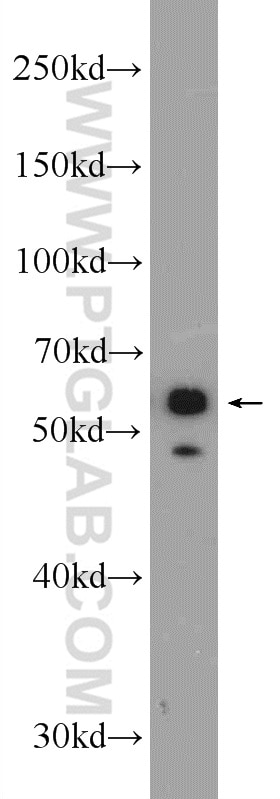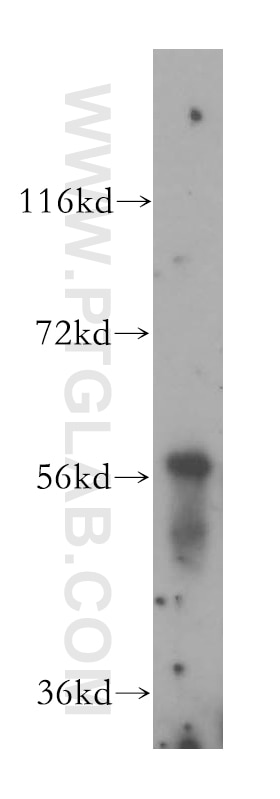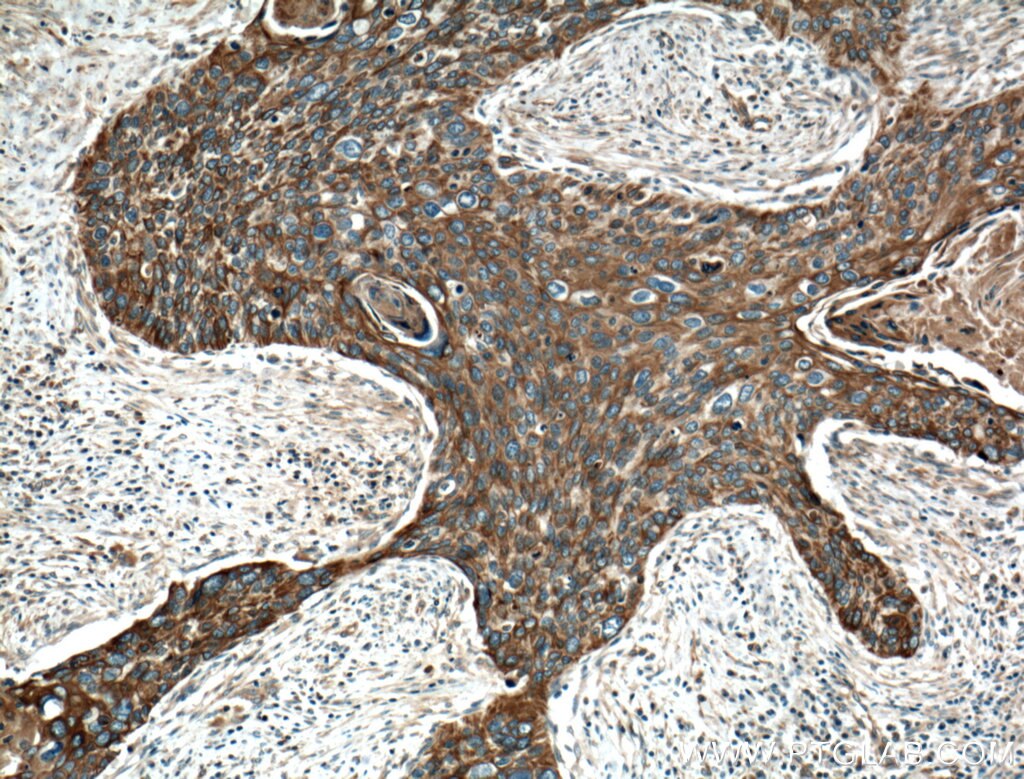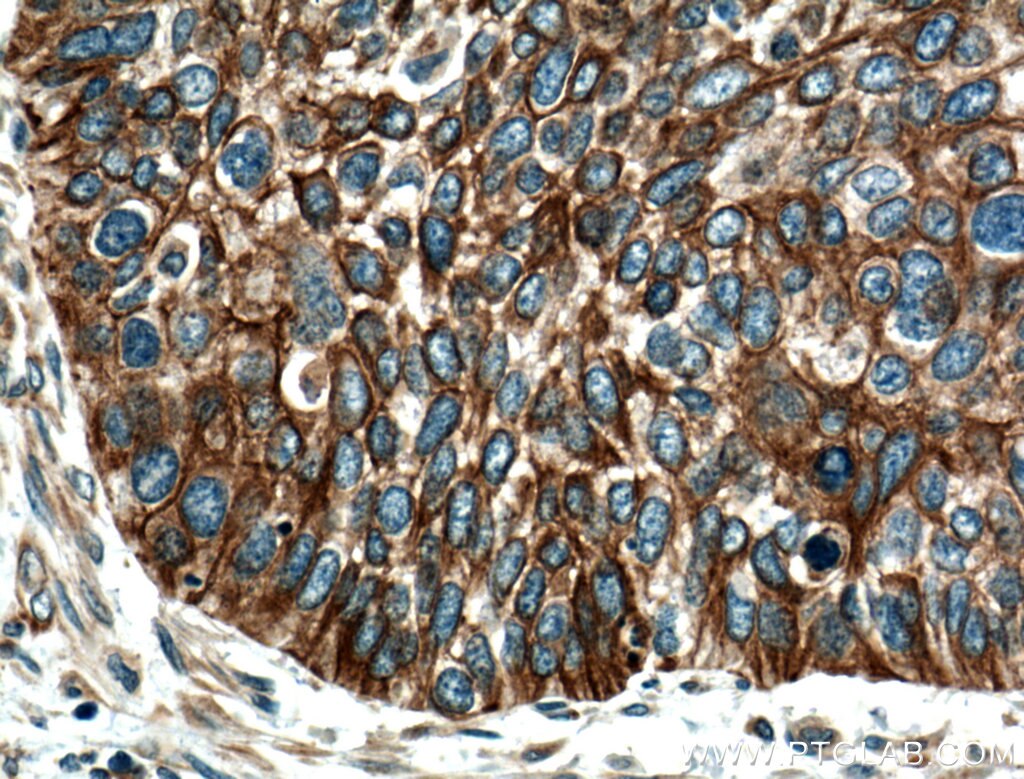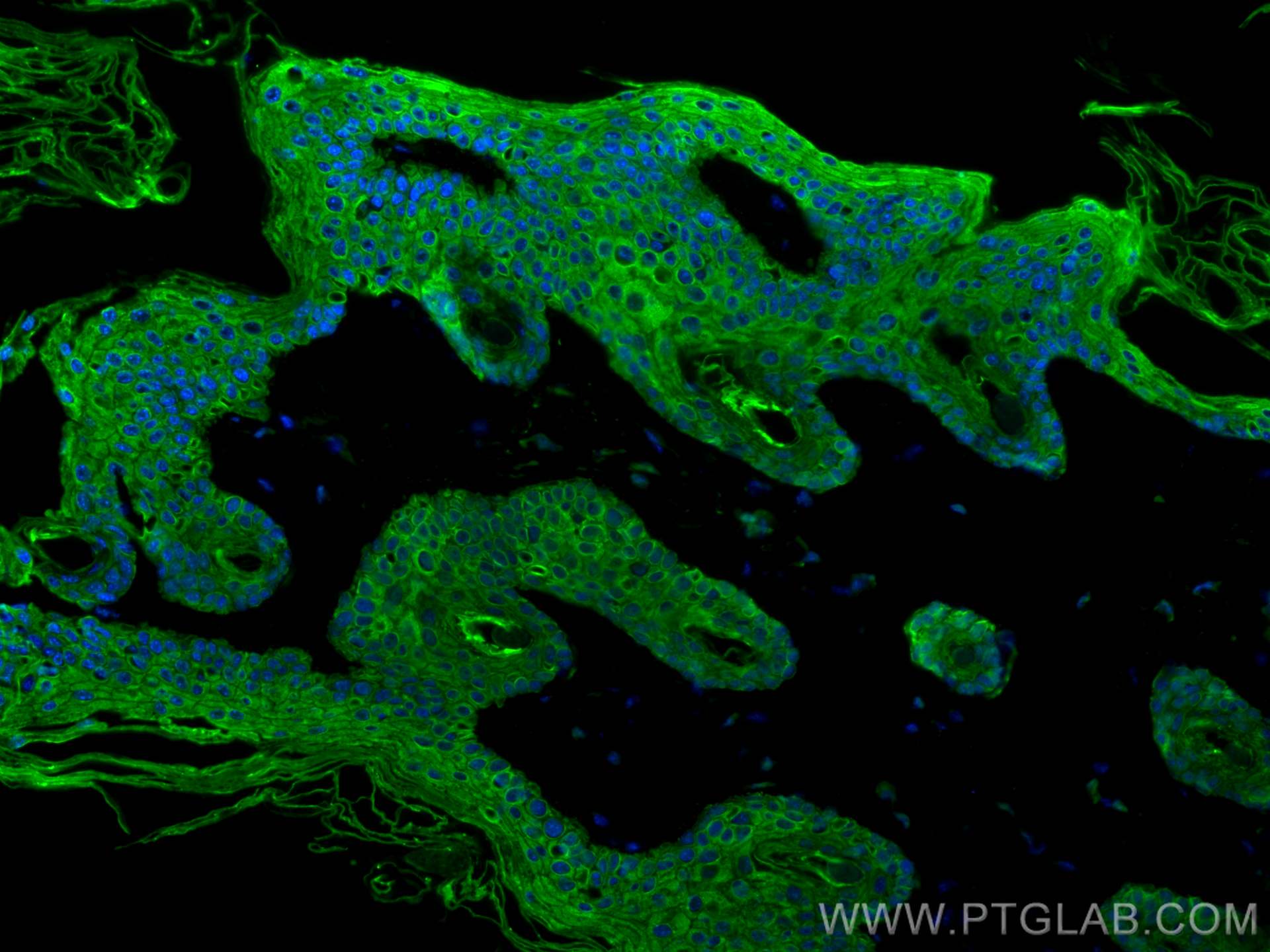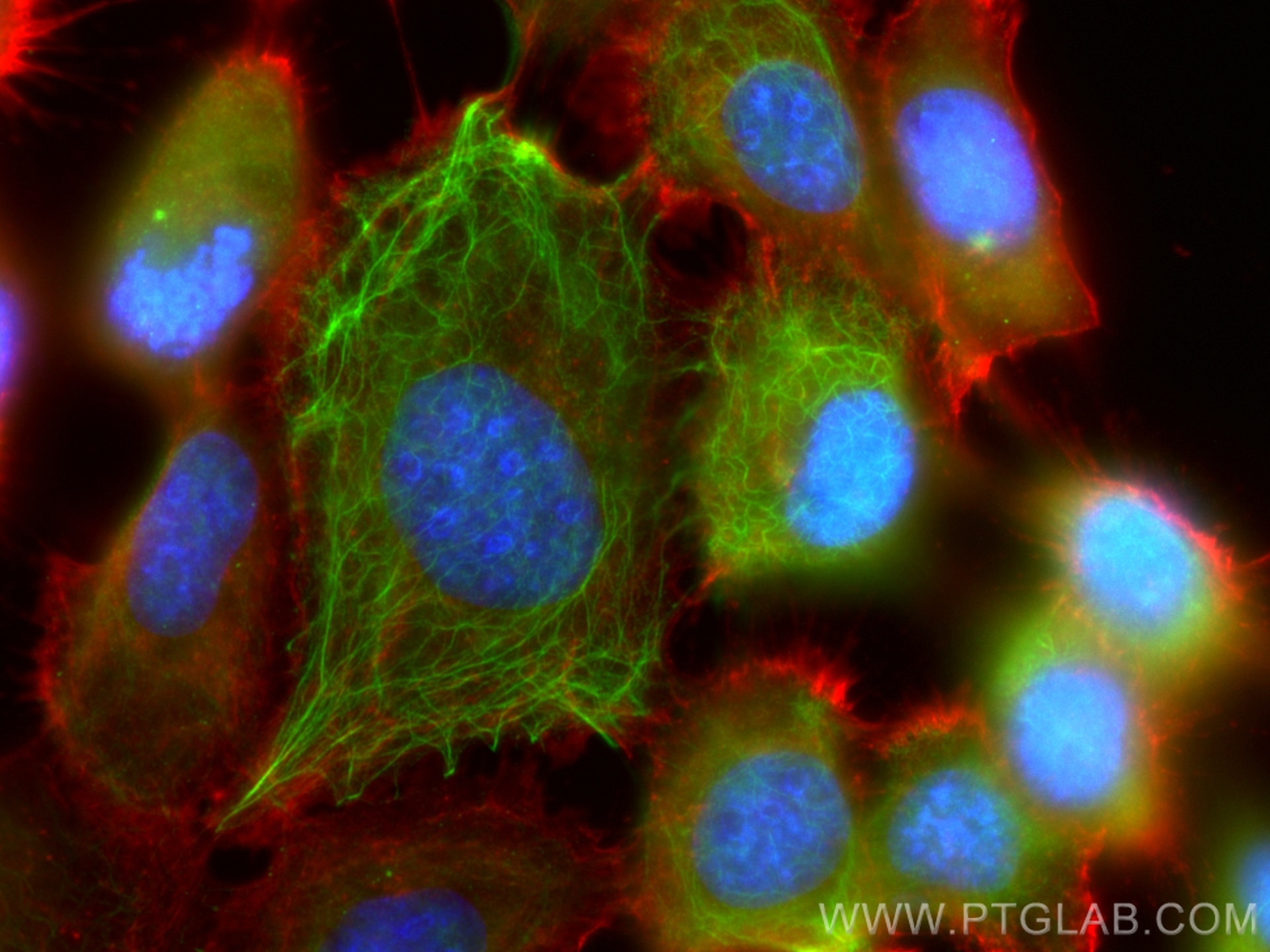Anticorps Polyclonal de lapin anti-Cytokeratin 4
Cytokeratin 4 Polyclonal Antibody for WB, IHC, IF/ICC, IF-P, ELISA
Hôte / Isotype
Lapin / IgG
Réactivité testée
Humain, souris
Applications
WB, IHC, IF/ICC, IF-P, ELISA
Conjugaison
Non conjugué
N° de cat : 16572-1-AP
Synonymes
Galerie de données de validation
Applications testées
| Résultats positifs en WB | cellules A431, tissu vésical humain |
| Résultats positifs en IHC | tissu de cancer du col de l'utérus humain il est suggéré de démasquer l'antigène avec un tampon de TE buffer pH 9.0; (*) À défaut, 'le démasquage de l'antigène peut être 'effectué avec un tampon citrate pH 6,0. |
| Résultats positifs en IF-P | tissu cutané de souris, |
| Résultats positifs en IF/ICC | cellules A431, |
Dilution recommandée
| Application | Dilution |
|---|---|
| Western Blot (WB) | WB : 1:500-1:1000 |
| Immunohistochimie (IHC) | IHC : 1:50-1:500 |
| Immunofluorescence (IF)-P | IF-P : 1:50-1:500 |
| Immunofluorescence (IF)/ICC | IF/ICC : 1:200-1:800 |
| It is recommended that this reagent should be titrated in each testing system to obtain optimal results. | |
| Sample-dependent, check data in validation data gallery | |
Applications publiées
| WB | See 1 publications below |
| IHC | See 2 publications below |
| IF | See 4 publications below |
Informations sur le produit
16572-1-AP cible Cytokeratin 4 dans les applications de WB, IHC, IF/ICC, IF-P, ELISA et montre une réactivité avec des échantillons Humain, souris
| Réactivité | Humain, souris |
| Réactivité citée | Humain, souris |
| Hôte / Isotype | Lapin / IgG |
| Clonalité | Polyclonal |
| Type | Anticorps |
| Immunogène | Cytokeratin 4 Protéine recombinante Ag9854 |
| Nom complet | keratin 4 |
| Masse moléculaire calculée | 534 aa, 57 kDa |
| Poids moléculaire observé | 57 kDa |
| Numéro d’acquisition GenBank | BC042174 |
| Symbole du gène | Cytokeratin 4 |
| Identification du gène (NCBI) | 3851 |
| Conjugaison | Non conjugué |
| Forme | Liquide |
| Méthode de purification | Purification par affinité contre l'antigène |
| Tampon de stockage | PBS avec azoture de sodium à 0,02 % et glycérol à 50 % pH 7,3 |
| Conditions de stockage | Stocker à -20°C. Stable pendant un an après l'expédition. L'aliquotage n'est pas nécessaire pour le stockage à -20oC Les 20ul contiennent 0,1% de BSA. |
Informations générales
Keratins are a large family of proteins that form the intermediate filament cytoskeleton of epithelial cells, which are classified into two major sequence types. Type I keratins are a group of acidic intermediate filament proteins, including K9-K23, and the hair keratins Ha1-Ha8. Type II keratins are the basic or neutral courterparts to the acidic type I keratins, including K1-K8, and the hair keratins, Hb1-Hb6. Keratin 4 is a type II cytokeratins. It is specifically found in differentiated layers of the mucosal and esophageal epithelia together with keratin 13.
Protocole
| Product Specific Protocols | |
|---|---|
| WB protocol for Cytokeratin 4 antibody 16572-1-AP | Download protocol |
| IHC protocol for Cytokeratin 4 antibody 16572-1-AP | Download protocol |
| IF protocol for Cytokeratin 4 antibody 16572-1-AP | Download protocol |
| Standard Protocols | |
|---|---|
| Click here to view our Standard Protocols |
Publications
| Species | Application | Title |
|---|---|---|
Nature A single-cell atlas of the airway epithelium reveals the CFTR-rich pulmonary ionocyte. | ||
Development Novel dynamics of human mucociliary differentiation revealed by single-cell RNA sequencing of nasal epithelial cultures. | ||
Int J Mol Sci Early Clinical Outcomes of the First Commercialized Human Autologous Ex Vivo Cultivated Oral Mucosal Epithelial Cell Transplantation for Limbal Stem Cell Deficiency: Two Case Reports and Literature Review | ||
Ann Diagn Pathol The molecular-based differentiation of Heck's disease from its mimics including oral condyloma and white sponge nevus. | ||
Cell Rep An Immunocompetent Mouse Model of HPV16(+) Head and Neck Squamous Cell Carcinoma. | ||
Oncotarget Significance of the NOR1-FOXA1/HDAC2-Slug regulatory network in epithelial-mesenchymal transition of tumor cells. |
